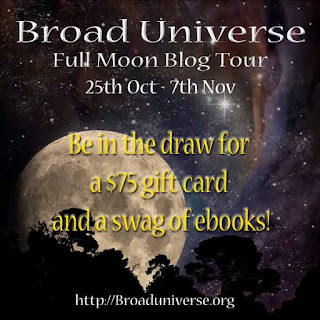 |
✥✥✥✥✥
The myths, legends, and temple and government records of ancient Mesopotamia list thousands of gods and goddesses, demons and protective spirits, and supernatural monsters. Only a few—depending on the text, 60 at most—were considered major gods.
The moon god was one of these major gods, and I’ll call him Nanna/Sin. For him and all gods, I list the Sumerian name first followed by a slash and the Akkadian (Semitic) name of the god with whom the Sumerian god became syncretized.
Even if you don't know the term "syncretization," you probably are familiar with examples of it. Early Christianity encouraged conversions by absorbing pagan solstice and equinox holidays and their symbols into Christian festivals, most notably Christmas and Easter; New Orleans Voodoo combines Catholicism and traditional West African faiths by making correspondences between them so that, for example, Legba and his symbols are equated with St. Peter and his.
Like baseball players, the ancient Mesopotamia gods had stats. Here are the stats for Nanna/Sin:
Names: Nanna, Nannar (Sumerian); Su’en (Akkadian), which eventually morphed into Sîn; Dilimbabbar (Akkadian for “the luminous,” used in literary texts)
Number: 30
Symbols: crescent moon, bull, tripod; cowherd; things shaped like the crescent moon such as the horns of a bull and a boat
Distinguishing traits: beard of lapis lazuli, flowing beard, old age
Duties: with his parents, paternal grandparents, and children, he is one of the "Seven Who Decide the Fates"; every month, during the new moon, Nanna/Sin goes to the Underworld to decide the fates of the dead
Patronage: astronomy, astrology, fertility of animals, divination
Cities whose patron he was: Ur, Harran (see map below for their locations), Ga’eš (a suburb of Ur), Urum
 |
| Map of modern Mesopotamia with some ancient cities shown. [Map created for public use by the Oriental Institute of the University of Chicago. Additions and color by Shauna Roberts. Links to all of the OI's Ancient Near East Site Maps can be found here.] |
Major temples: É-kišnugal (“house of the great light”) in Ur; É-húl-húl (“house of rejoicing”) in Harran
Major epithets (nicknames): Lord of Wisdom; The Luminous; Young Calf of Enlil; Boat; “Diviner of Fates”
A few other epithets: Frisky Calf of Enlil; The Light of the Land; The Lord Who Alone Is the Rising God; Great Lion of Heaven and Earth; The Wise One on High Who Reaches the Decisions; Lord of Ur; Chief Son of Enlil
Wife: Ningal/— (goddess of dream interpretation)
Father: Enlil/Ellil (“Lord Air”; he probably was originally a weather god)
Mother: Ninlil (Sud)/— (“Lady Air”)
Children: Utu/Shamash (the sun god); Inanna/Ištar (goddess of sex, war, and the “star” Venus)
Many literary works talk about Nanna/Sin, often with his wife, Ningal. Their courtship and marriage was the subject of myth. Rather than paraphrase and
The hymn below praises the temple of Nanna/Sin in Ga’eš. This hymn is one of many honoring small Sumerian temples that Enheduanna, a high priestess of Nanna/Sin at Ur for decades, wrote to help syncretize the gods of Sumer with the gods of Sumer’s Akkadian conquerers—an early example of political propaganda.
Note: The translators use ellipses to mark sections where the cuneiform tablets were unreadable. I changed two transliterations and added two definitions.
O shrine, great sanctuary founded at a cattle-pen, small shining city of Suen, Kar-zida [“Pure Quay,” the name of the temple at Ga’eš], your interior is a mighty place, your foundation is holy and clean. Shrine, your gipar [residence of the high priestess], is founded in purity. Your door is of strong copper set up at a great place. Lowing cattle-pen, you raise your horns like a bull. Your prince, the lord of heaven standing in celebration, ...... at midday and ......, Dilimbabbar, has erected a house in your precinct, O Kar-zida, and taken his seat upon your dais. [source: Black, J.A., Cunningham, G., Fluckiger-Hawker, E., Robson, E., and Zólyomi, G., The Electronic Text Corpus of Sumerian Literature (http://www-etcsl.orient.ox.ac.uk/), Oxford 1998–. ]This hymn and all other known temple hymns written by high priestess Enheduanna can be found here.
“A Cow of Sîn” is an incantation to help a woman give birth more easily. It’s known in several forms and depicts Nanna/Sin as a loving cowherd. Here is a translation of one variant:
 |
| [source: Veldhuis, Niek. Library of Oriental Texts: Volume 2: A Cow of Sîn. The Netherlands: Styx Publications, 1991. This publication can be found in its entirety here.] |
✥✥✥✥✥
Below is the Broad Universe Rafflecopter entry form and links to other blogs in the blog tour. The winners for these prizes will be drawn on 10 November. After entering, keep scrolling down to find my own Rafflecopter giveaway of Ice Magic, Fire Magic swag.
a Rafflecopter giveaway
✥✥✥✥✥
In my contest, one person will win an Ice Magic, Fire Magic swag pack containing a tote bag, mousepad, notebook, bookmarks, pen, a 2016 calendar magnet, and (not shown) sticky notes and a $10 Amazon gift card. This contest also ends on 10 November.
 |
| The prize: Ice Magic, Fire Magic swag pack. |
a Rafflecopter giveaway







